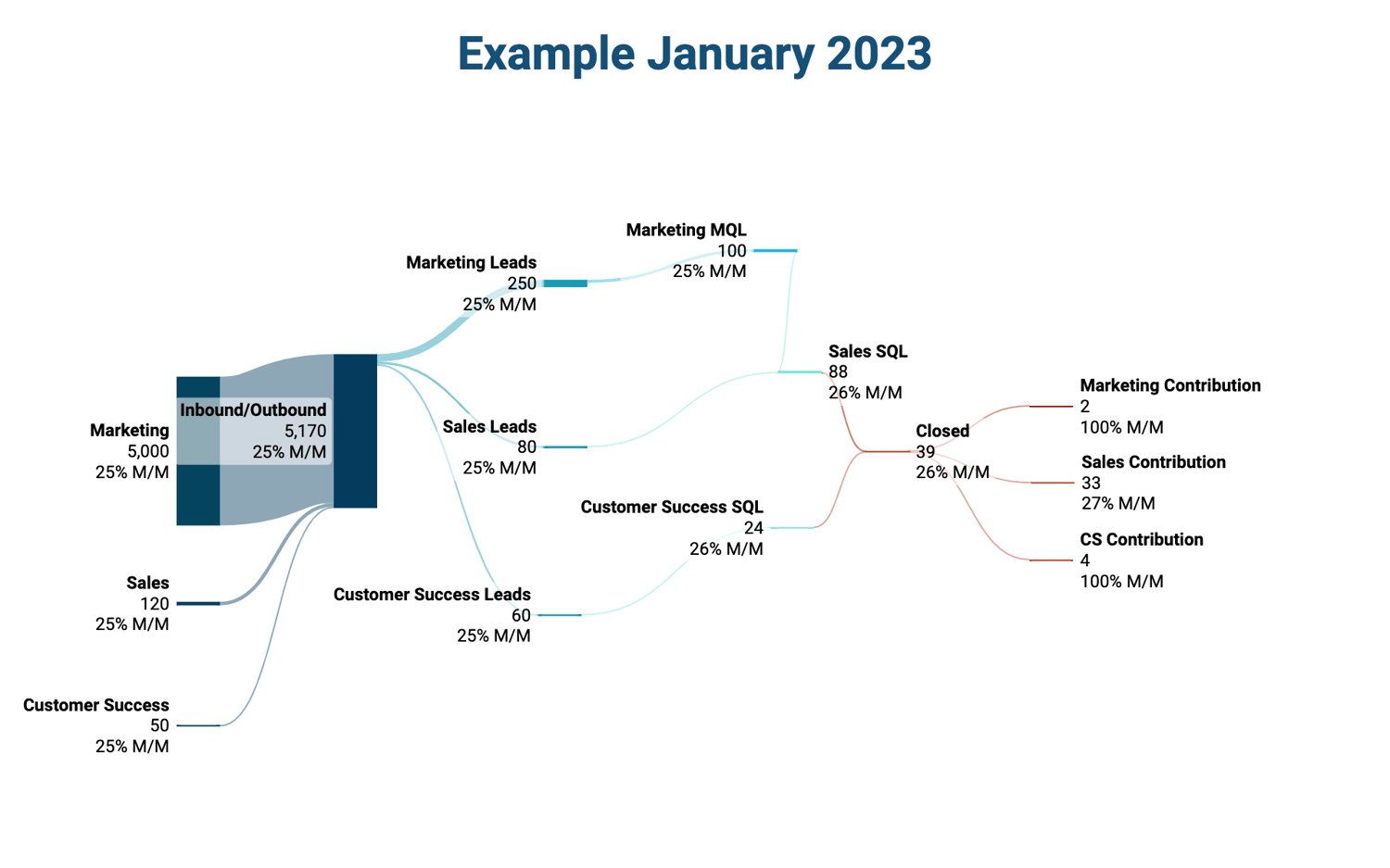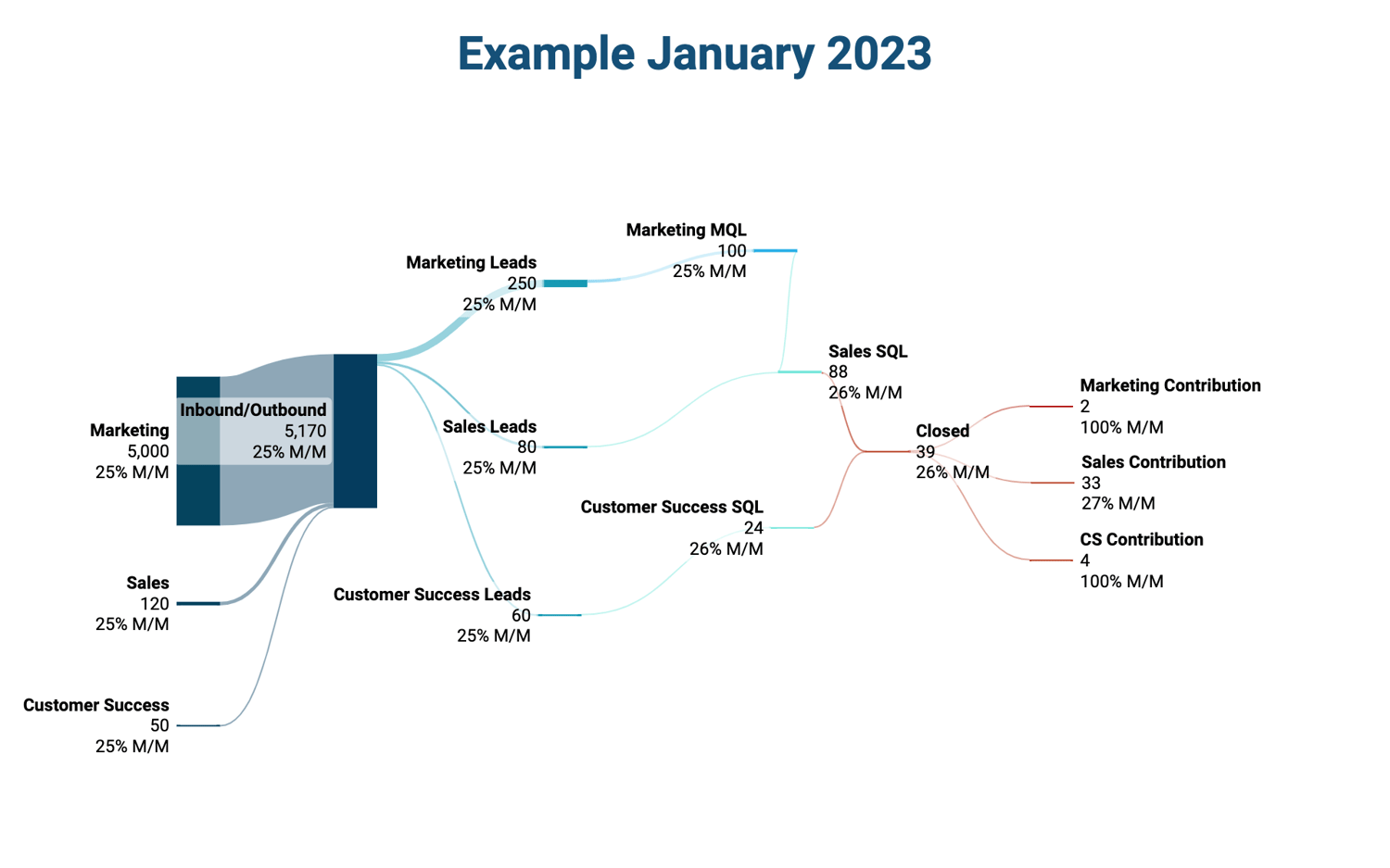Continuing on the topic of alignment between sales, marketing, and customer success...
Previously, I covered the importance of alignment on your company core: (purpose, vision, mission, and culture), followed by unity on your ideal customer profile (ICP) and customer journey. Now it's time to cover alignment on metrics and key performance indicators (KPIs).
I thought this was a no-brainer topic but, after attending a large SaaS tech event recently, I discovered it clearly needs explanation. KPIs and metrics became a good part of the agenda there. Additionally, I have had some conversations recently that revealed that KPIs and metrics can be misunderstood and often underutilized.
I know that sometimes marketing gets stuck in talking about their metrics rather than KPIs, so let’s cover my perspective on the distinction between the two first.
Metrics - don’t have a direct impact on business results. Examples: web traffic, sales outreach, customer references, etc.
KPIs - have a direct impact on business results. Examples: revenue, churn, customer acquisition cost (CAC), etc.
Both metrics and KPIs are very important to assess business performance or execution of a specific process. Each function should measure their own metrics as below; however, where unity and alignment becomes important is when Sales, Marketing, Customer Success, and, preferably, also Product are measured on the same KPIs.
Team Metrics:
A baseline should be established and tracked for all metrics on a monthly basis. The same dashboard or spreadsheet should be shared between the functions for transparency and visibility.
Pro tip: compare results against your baseline instead of generic benchmarks.
Following are some examples of metrics you likely want to monitor; there are more beyond this list of course.
Marketing Metrics
- Activities, such as newsletter subscribers, events, webinars, etc.
- Web traffic and conversions
- Leads and conversion
- Followers and reach
- Marketing qualified leads (MQLs)
Sales Metrics
- Outreach, such as phone calls, social selling, emails, etc.
- Number of meetings and conversions
- Sales qualified leads (SQLs)
- Pipeline and conversions
Customer Success Metrics
- Customer satisfaction score (CSAT) and net promoter score (NPS)
- Customer success stories and testimonials
- Support resolution time
- Customer feedback
Cross-functional KPIs:
- Annual recurring revenue (ARR), monthly recurring revenue (MRR)
- Churn
- Average revenue per account (ARPA), average revenue per unit (ARPU), average revenue per customer (ARPC)
- New customers
When marketing, sales, customer success and, preferably, product align around the same KPIs:
- the focus will be corrected (meaning, aligned with the business),
- teams will find new ways to work together (cross functionally), and,
- everyone shares the highs and lows (motivating each other instead of working in silos and with friction between the functions).
Incidentally, for me, instead of (still) discussing what and how to measure sales and marketing alignment at that event, it would have been more valuable if the discussion had been around: how to consolidate the technology stack for sales and marketing to get unity and ways to easily measure contribution across tactics and customer journeys.
According to chiefmartec.com, the marketing technology vendors at hand continue to increase: in 2014, there were just 947. In 2015, that number doubled to 1,876, and by 2020, there were 8,000--and that is just for marketing tech! It is likely a similar situation with the vendor numbers on sales tech. As a CMO / CRO, I am drowning in the sea of tech without getting more insights. I am hoping artificial intelligence (AI) will save me instead of adding more waves to the sea. :-)

On a side note,if you want to impress boards and investors, they love graphics that distill KPIs and metrics visually. I made the below graphic with sankeyart.com/. *Note the image does not represent a full funnel; it is more of a visual representation than a guide on actual numbers. :-)
To learn more about Metrics and KPIs, download the free book.
We also have KPI and Metrics Templates available in the SavvyX Program (there is no need for you to start from scratch). You can download the SavvyX Program here: SavvyX Program


